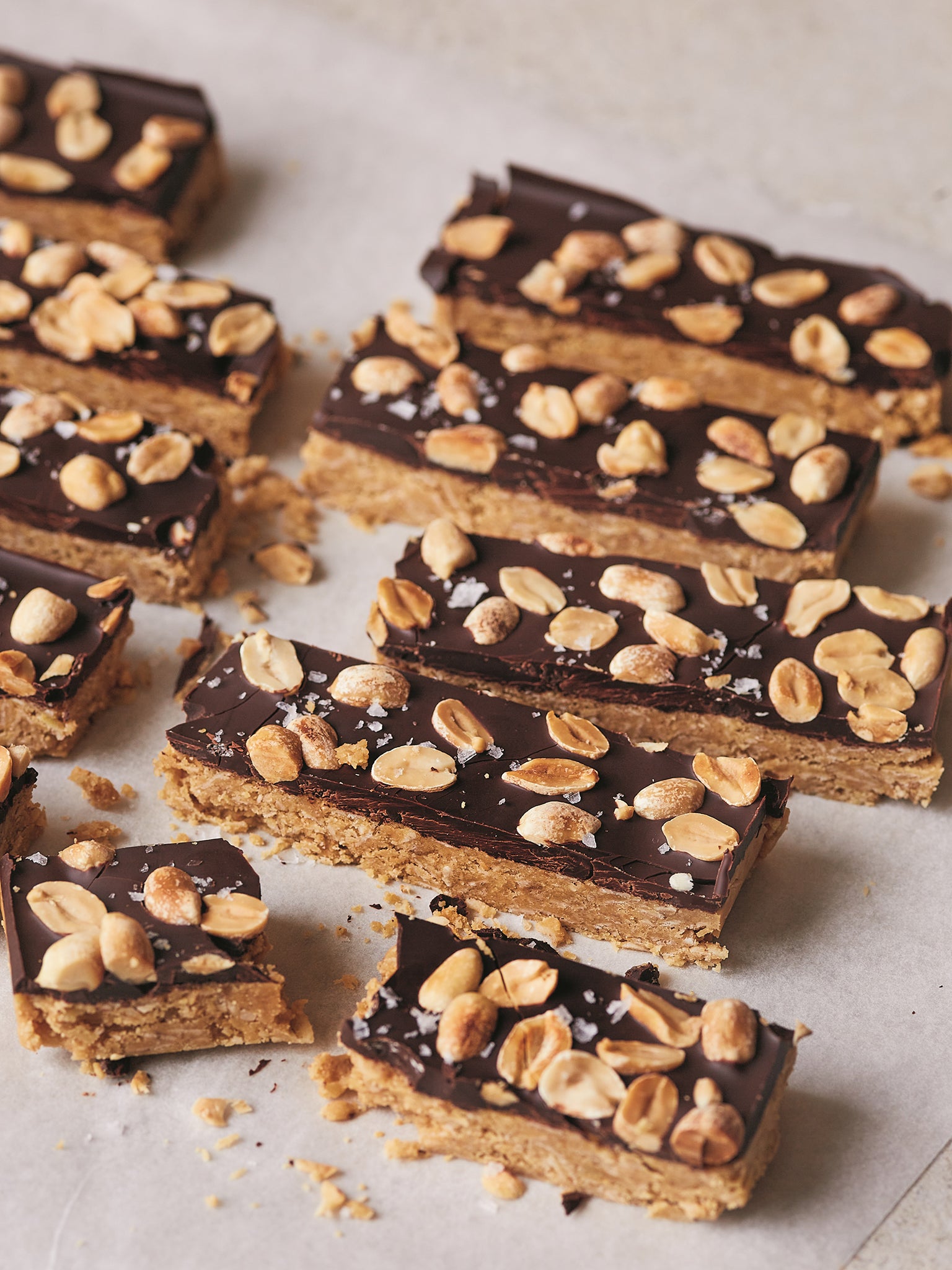Reboot with real meals: 10 tips for cutting back on ultra-processed food at home
Tackling the amount of UPFs in our diet can be daunting – they’re in everything from sliced bread to pasta sauces... But fear not, Melissa Hemsley has the tips you need to overhaul your diet and introduce more goodness into your life


Ultra-processed foods (UPFs) have become a hot and horrifying topic of late, thanks to the fact that UPFs are linked to serious physical and mental health outcomes – and the fact that the UK population eats more than any other country in Europe.
In general, when we talk UPFs, we are referring to foods that are highly altered, highly palatable and contain unrecognisable ingredients you wouldn’t add when cooking at home. Think confectionary aisles, fizzy drinks, some ready meals, ready-to-eat sauces and pastes and most of the supermarket’s breads and breakfast cereals etc.
It’s important to highlight that UPFs are a broad category of foods and not all UPFs are the same. I eat small amounts of some UPFs and I don’t wish to demonise them all. It’s our government, policymakers and the big food industry players who have the power to curb their rapid spread and reorganise our food system for the better of everyone in society.
I worried about what I could do to be part of the change. After becoming a parent last year, I was even more committed to coming up with a hopeful, healthy, helpful antidote to all the alarming statistics.
So I wrote a cookbook to help make home-cooking as convenient as buying convenience foods. It’s called Real Healthy: unprocess your diet with easy every day recipes, and as well as quick, delicious and doable meals, it’s your go-to guide for cutting back on UPFs.
The easiest way of reducing UPF consumption is to cook more and prioritise whole and less processed foods eg fruits, veg, grains, beans, lentils, herbs, spices, nuts and seeds. This is easy to say, but can be difficult to put into practice when we are time-poor and high on stress. We need sustainable swaps, shortcuts and solutions that slot into our busy lives so we can make simple changes for our long-term health.
I want to help you rely less on UPFs so I’m sharing my top 10 tips to reboot with real meals. From how to stock up on healthy staples, to recognising UPFs, to not getting overwhelmed about how many you’re consuming, I hope this will help you create some life-friendly and life-changing eating habits.
Don’t pressure yourself
We know perfection is the enemy of progress so a good place to start this reboot is to try not to stress about it – this isn’t a new diet or regime, it’s not about all or nothing and no one is telling you what rules to follow. If anything, the only guide I’d offer is “make more of the foods that make you feel good”. Go for delicious and doable recipes that you enjoy eating.

Stock up for success
Build up a foundation of real foods by prioritising some affordable storecupboard staples and particularly some freezer essentials (I always keep bags of frozen spinach, mixed berries (so much cheaper), mixed quick cook veg like peas, edamame and corn) so you’ve always got the building blocks of a quick meal on hand for those evenings you get caught short and don’t have time to dash to the shops. For example, a tin of chickpeas and your favourite spice mix in the cupboard, greens in the freezer and tomato purée and yoghurt in the fridge.
Get to know your food better
Turn the packet over and read the label. Prioritise doing so with products you eat a lot of or eat daily. Different brands of products may mean that you can buy a UPF or minimally processed version of the same ingredient (sliced bread, which is one of the most bought UPF foods). Once you get into the swing of it, you’ll find it easier to look out for products that you DO want to take home with you.
Containers

Stock up on reusable jars (old honey or jam jars or mustard jars work well) to use for breakfasts on the go or to store layered-up lunch salads which I like to call jalads (aka salad in a jar). You might also find it useful to invest in a flask for homemade smoothies and for taking hot food on the go. One of my lunch favourites is the White Chicken bean Chilli on page 62. I have a few leakproof containers for freezing or safe fridge storage. Always try to label with the date, you always think you’ll remember and then you don’t! Trust me.
Team up and share the load
Join forces with a colleague, friend or flatmate to share food here and there. We know from making fitness and other life commitments that it’s always easier to create a new habit or try new things with someone else involved. One of you could make snacks for the 4pm slumps and the other could make a delicious big salad to enjoy as a working lunch, then the next week you swap around.
Make a meal plan
Some of us like plans and some of us don’t! I’m not suggesting you need to suddenly sit down every Sunday and write a meal plan for the week, every week but a flexible-ish and gentle guide to the week that suits your schedule is going to hugely help your week’s shopping list and help you add more wholefoods to that list and less UPFs.
It also will likely help you save money by wasting less food! If you don’t fancy being prescriptive every day, how about prioritising the times you find yourself leaning hard on UPFs to help you avoid the same pitfalls each time (eg working lunches or breakfasts)? Letting your kids choose a dinner recipe each week might help encourage them to try new ingredients or get more interested in cooking.

Prioritise a bit of prepping ahead...
...both for foods you love to eat and foods you’d like to eat more of! Think of your favourite foods and the ones you make again and again. For example, do you enjoy lots of roast vegetables, tomato sauce or broccoli? Maybe make a big batch of them once a week to save you time. And are there foods that you’d like to eat more of but keep forgetting too? Perhaps salad and lentils.
Try prepping some of these ahead and making a jar of salad dressing (it can last for a few weeks in the fridge) so that you’re more likely to enjoy them more often. On a day, I know I have a bit more time, like a Sunday eve, I make something like the one pot “lazy lasagne” so that all I need to do is reheat it when I get back from work on Monday night. Or every week, I make a batch of muffins and freeze half – one week I go sweet and do lemon blueberry muffins for snacks, then I switch it up to make savoury muffins the next week like my frittata muffins which are ideal for breakfast (usually add some cottage cheese or feta, tomatoes, eggs).
Batch cook & freeze a fave
I don’t mean eating the same leftover stew four nights in a row (unless you want to!). It could be as simple as doubling up your dinner so you have leftovers for lunch. Like many of us, I grew up with parents who both worked full time – a resourceful army father (who couldn’t cook but couldn’t stand waste) and with a thrifty Filipino mother who championed “cook once, eat twice”.
I often find myself making a bigger batch of something so that I can freeze half for a rainy day (check out the big batch, lots of veg bolognese recipe on page 168). Or you can pick dinner recipes that will give you enough leftover to roll over for lunch the next day (like the throw-it-all-in lentils on page 144, I’ll have these with rice or quinoa one day and with flatbreads another night).

Switch it up
We are creatures of habits so it’s all too easy to get stuck in a shopping rut, so why not pick something in each weekly shop to swap out? One week it could be trying a different sort of salad leaf – watercress and rocket instead of lettuce, sweet potatoes instead of potatoes – then the next it could be trying a different grain like pearl barley instead of rice or those packet mix of grains for variety.
Not only does this keep us from getting bored of the same foods but means we are gaining so much more diversity in what we eat. Perhaps each week, you could challenge yourself to add one more whole food to the shopping basket and take out one UPF? In a month, you’ve eaten four less UPFs and added four more whole foods. In a year not only have you cut back on 50 UPFs but you’ve added 50 whole foods too!
Mindful eating
I know this term makes some people’s eyes roll but we have a lot to learn from our bodies. I find it helpful to take a second to observe how I feel after eating certain foods. If I have an energy crash, get a headache, or find myself feeling jittery or have a bit of brain fog, then naturally I try to avoid eating these foods during the week when I’m juggling work, parenting and already feeling stressed.
I want food to nourish me, not tax me further when I’m already feeling pressured cookered! When I notice certain foods keep me energised, happy and satisfied until the next meal, I’m inspired to eat more of them. Real food is feel-good food.

Chocolate peanut butter (no-bake) bars
Makes 16
Takes 20 minutes, plus setting time
Keeps for 1 week, at room temperature
250g smooth peanut butter
100g ground almonds
100g porridge oats
6 tbsp maple syrup
1 tsp vanilla extract
Little pinch of sea salt
For the chocolate layer
180g dark chocolate, roughly broken
1 tbsp smooth peanut butter
Flaky sea salt, for sprinkling
1. Line a small tin or dish (about 15 x 8cm or square equivalent) with greaseproof paper, making sure it comes up high enough on the sides so that you can lift the mixture out of the tin once it’s set.
2. Mix the peanut butter, ground almonds, oats, maple syrup, vanilla and salt together in a bowl. Transfer to the lined tin, pressing down with the back of a spoon or spatula to make it even and compact.
3. For the chocolate layer, melt the chocolate in a bain-marie (a heatproof bowl set over a pan of very lightly simmering water, making sure the bottom of the bowl does not touch the water). Once melted, stir through the peanut butter and pour this evenly over the base. If topping with the whole peanuts, scatter these over the chocolate layer.
4. Sprinkle over a little pinch of flaky sea salt. Set in the fridge for 1 hour or until firm, then cut into 16 pieces to serve.
Extracted from Real Healthy by Melissa Hemsley (Ebury Press, £26). Photography by Lizzie Mayson




Join our commenting forum
Join thought-provoking conversations, follow other Independent readers and see their replies
Comments